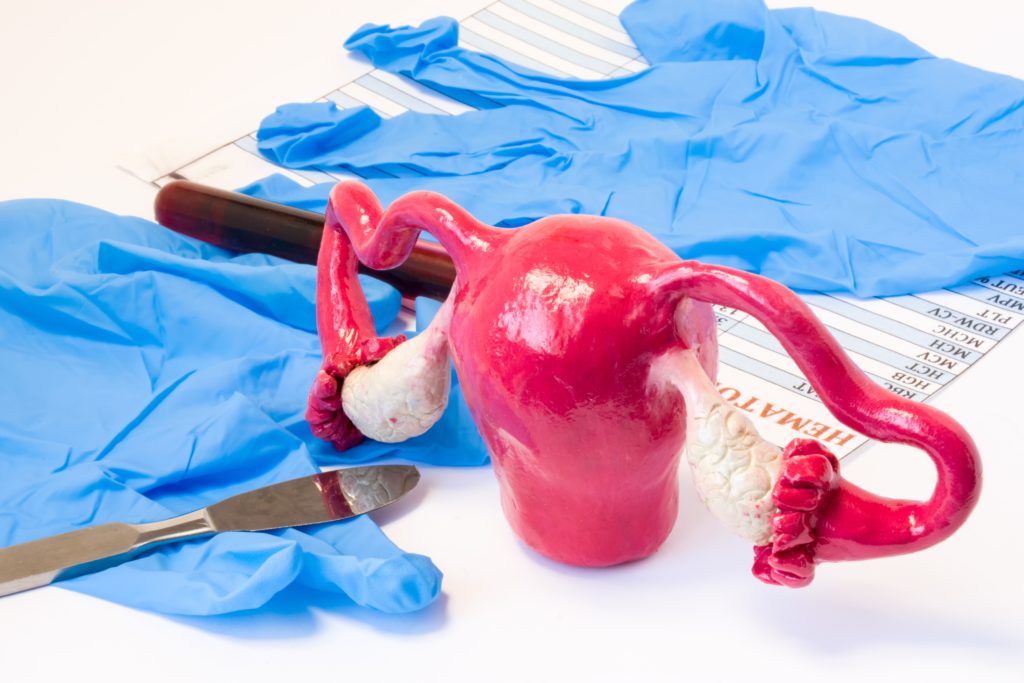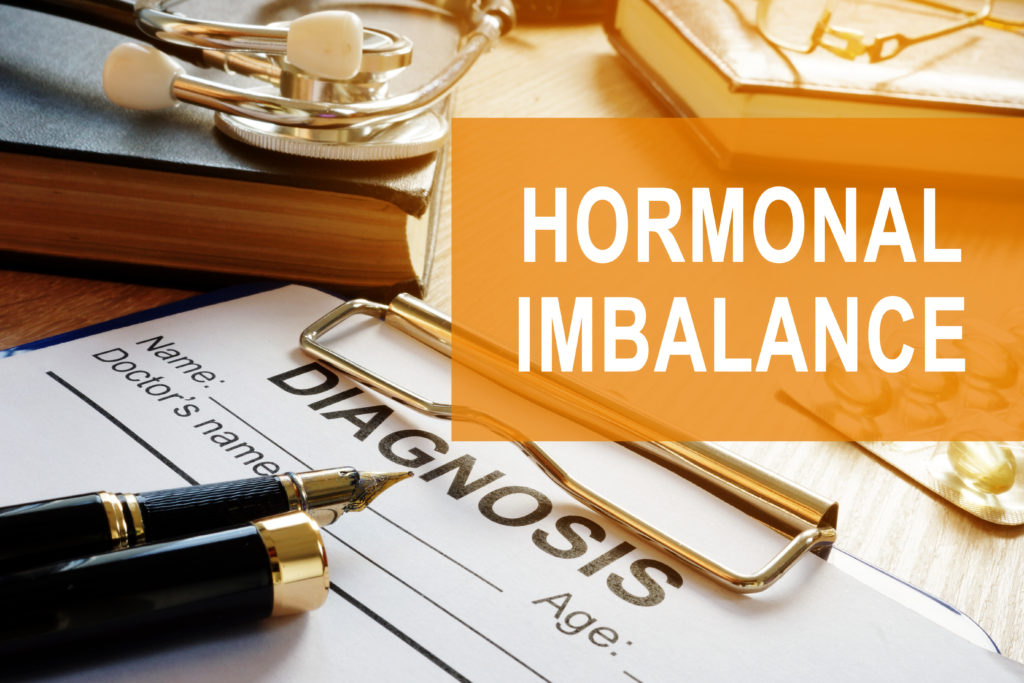I remember a woman telling me years ago that she couldn’t wait to have a hysterectomy. She explained that she was tired of monthly menstruation and was “done with those parts anyway.” This was before my self-health days, but it still didn’t sit right with me.
I wondered if we should really be willing to throw away body parts just because of a week of inconvenience once a month? Surely those parts must serve a purpose throughout our lifespan. But then I moved on with my life, and didn’t think about it again until I wrote about vasectomies a couple of months ago.
Shortly after that post was published, a reader reached out to ask me about the female equivalent to a vasectomy—a hysterectomy. You see, she underwent a hysterectomy twenty years ago, and she’s still trying to balance out the aftermath of the procedure. In her words, “The aftereffects of the surgery have robbed me of everything.”
After reading such a heartfelt message, I was compelled to do some digging for myself. I’m happy to say that I’ve never been put in a position of needing to decide whether or not to get a hysterectomy. However, because I’d never looked into this particular women’s health concern, I was completely in the dark.
I discovered some scary truths about hysterectomies that you may not be aware of.
Let’s start at the beginning, shall we? According to the Functional Endocrinology of Ohio, there are two types of hysterectomies:
Complete (or total) hysterectomy: This procedure involves the removal of a woman’s uterus, cervix, fallopian tubes, and ovaries. (Removing the ovaries as well as the uterus causes even more severe problems than only removing the uterus.)
Sub-total (or partial) hysterectomy: This less-extreme procedure removes the uterus and leaves the cervix intact.
They go on to say that of the 600,000 hysterectomies that women undergo annually in the United States, more than 90 percent are performed for non-life-threatening conditions. In fact, sixty years of medical literature show that “hysterectomies are over-performed and many are unnecessary.”
When you consider the story of the reader who contacted me, this is far from trivial. The problem becomes even more extreme when you contemplate the aftermath of the surgery. Here are just a few of the potential complications associated with hysterectomies:
- Bladder and urinary problems
- Hemorrhage
- Injury to the nerve that travels to the leg
The long-term effects are somber, and they can lead to possible estrogen dominance:
- Increased risk of breast cancer, chronic fatigue syndrome, weight gain, depression, and bodily aches and pains
- Heart disease, stroke, and osteoporosis
- Mood swings, low libido, and incontinence
Interestingly, a 1956 article in the Proceedings of the Royal Society of Medicine brought many of these concerns into the spotlight more than 60 years ago. Documenting what several physicians witnessed with their hysterectomy patients, the article noted headaches, lethargy, and even decreased marital happiness, in addition to all of the repercussions above.
Of course, the role of a woman’s uterus, cervix, and ovaries hasn’t changed from the 1950s to today, so it stands to reason that removing any or all of them will lead to the same problems for women now as it did then. It’s unfortunate that these warnings are brushed under the rug by so many healthcare providers.
For a woman who needs to weigh the benefits of getting (or not getting) a hysterectomy , one of the physicians in the article, Dr. Katharina Dalton, says that “the pros and cons of the operation should be impartially presented to both husband and wife.”
This ensures that both of them are aware of the magnitude of this decision, helps them recognize any changes that may affect her after the procedure, and explains the reasons behind the changes. Knowledge and open lines of communication are the key to any successful and healthy relationship.
Dr. Dalton then takes it a step further:
The patient should know which symptoms she may expect to be alleviated by this operation. Floodings will cease; dysmenorrhea will go; sterilization will be permanent. Headaches, depression and other accompaniments of menstruation will continue to occur cyclically; hot flushes will become more acute. There may be a weight gain of 1 or 2 stones [14-28 pounds] within a year. Dyspareunia will not improve, but hysterectomy may be a convenient excuse for total abstention.
The majority of hysterectomies are performed to address hormonal imbalances. The holistic approach would be to first try to bring a woman’s hormones into balance by initiating proper and exhaustive testing followed by evaluation, with the far more desirable goal of avoiding the procedure altogether.
But what if you’ve already had a hysterectomy, and you’re simply trying to maneuver through any problems you’re experiencing because of it? While all potential solutions must be tailored to the precise state of each individual at the starting point of their healing process, I have some good news to share.
We humans are the sum total of everything that has happened in our lives. This includes all of the negative effects of poor nutrition that we heap upon ourselves, all of the choices we’ve made, and how we choose to cope with them. A few of these influential factors include:
- Prenatal nutrition
- Momentous events throughout our lives—good and not so good
- Exposure to different environments, toxins, etc.
- Lifestyle habits with regards to nutrition, exercise, spiritual practices, etc.
- Heredity
Holistic providers who take a whole-person approach to your health and vitality will invariably ask you about all of these things and more. So while the end result of a complete hysterectomy is the same from woman to woman, and all human bodies need the same foundational building blocks, women’s needs and responses to treatment afterwards might be similar or sometimes might be very different.
Now for the good news. Your endocrine system has some adaptive abilities. The healthier the glands are, the better they can adapt. The first step is to nourish and strengthen the adrenals, pituitary, and thyroid. When there’s hormonal imbalance, this triad of glands work together to take the burden from one and put it on the other. Why? Because the adrenals are capable of manufacturing up to 9 percent of the estrogen that the ovaries normally produce. That might sound insignificant, but it isn’t. Every little bit helps a lot. If the adrenals are burned out from constant fight-or-flight stressors and reactions to life situations, or if they’re fatigued from overstimulation and undernourishment, they can’t help.
This alone speaks volumes about the need to make sure your endocrine system is nourished and revitalized before considering a hysterectomy. Ideally, you won’t wait until the situation gets so out of hand that you’re faced with such a drastic decision. Our endocrines are just as in need of good food and whole-food supplements as the rest of the body.
The deeper you go into this amazing system, the more you realize how right Sir Robert McCarrison, MD, was about the critical role nutrition plays in establishing and maintaining healthy function in the endocrine system. McCarrison was the first researcher to inform the medical world that the endocrine system is the first system in the body to succumb to the effects of malnutrition, carefully demonstrating the lesions in the endocrine glands caused by specific adulterated foods.
The key to bringing your body back into balance is to seek out a professional who is well-trained in clinical nutrition and Standard Process supplements, and who knows how important it is to evaluate the unique needs of their patients. Look for a practitioner who is knowledgeable about proven methodologies that assess exactly what you need at any given time, such as muscle response analysis (MRA) testing. If you don’t already have one, look for a Standard Process health care professional in your area.
We’ve mentioned many times that our bodies achieve optimal health through a delicate composition of nutrients, hormones, movement, and lifestyle. Heed any signs of imbalance and look for the adjustments you need to make before an imbalance becomes a disease process.
Here are a few resources that may be helpful in furthering your self-health education on this topic:
From Selene River Press:
- Mercury Thermometer, Endocrine Handbook, and Thyroid: Guardian of Health bundle
- Prenatal Nutrition and Birth Defects by Mark R. Anderson
- Health Is Simple, Disease Is Complicated by James Forleo, DC
- Nutrition Affiliated with Organs, Glands, and Tissues Chart
Other Resources:
“7 Steps to Balance Hormones Naturally” by Dr. Josh Axe. This article offers both an explanation of how the endocrine system works and a discussion of alternative methods (acupuncture and adaptogen herbs) for balancing your hormones. You may walk away with ideas you hadn’t considered before.
HysterSisters.com. An online forum dedicated to women supporting each other—from deciding whether a hysterectomy is right for them through all of the days after.
From Fatigued to Fantastic by Jacob Teitelbaum. The reader who started me on this journey mentioned that this book was a valuable resource in her life. Maybe it will be exactly what someone else out there needs right now.
Images from iStock/Instants (main), designer491 (hormonal imbalance sign), Shidlovski (uterus).



